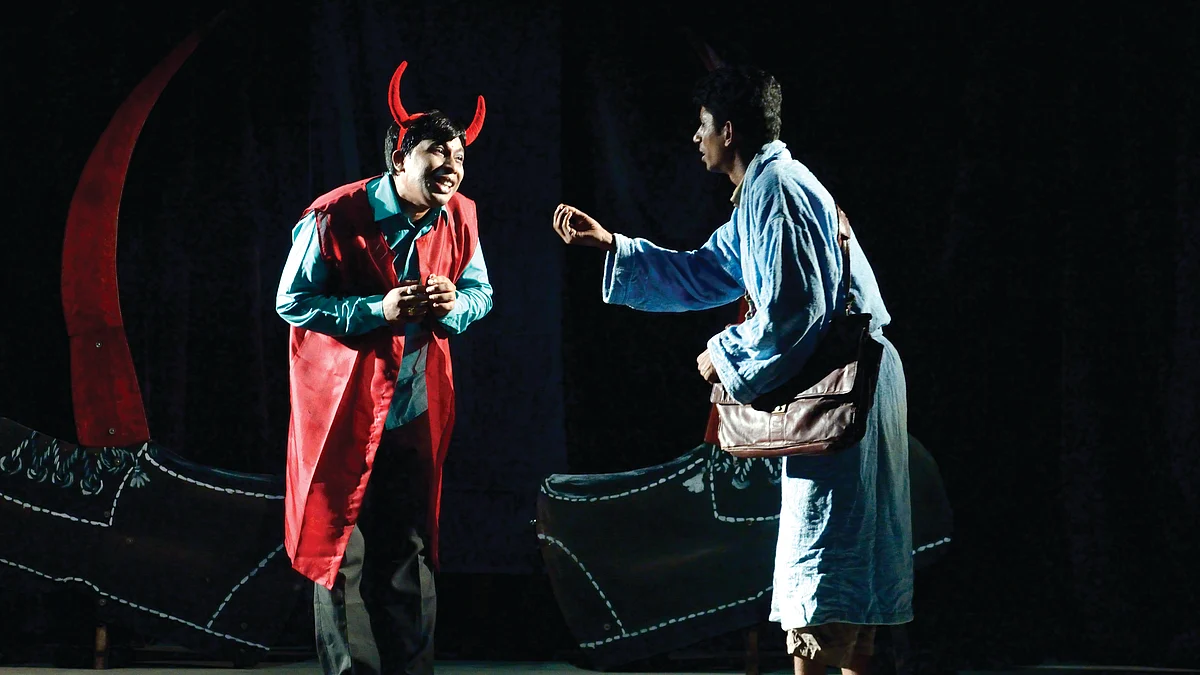Bengali theatre in Delhi needs a new lease of life
When Bengali theatre arrived in New Delhi after 1947, patrons hoped that the youth separated from their home would fuel the passion of art

The hall broke into applause, all 500 people stood up in applause as the actors stepped in front of the curtain to take the final bow. “This is what theatre needs, this is what Bengalis living outside Kolkata have been missing out on,” murmurs the elderly gentleman I was sitting next to. He reminded me that we were standing in Muktodhara, Central Delhi, not in Rabindra Sadan or Tapan Theatre in Kolkata.
Theatre activist Santanu Gangopadhyay says, “Kolkata has managed to maintain a vibrant theatre culture with an audience that spans all ages.” However, during his stint in Delhi where Bengali theatre arrived in 1950s, he realised that the capital did not have enough takers for the artform. One of the best-known names in Delhi’s Bengali theatre circuit is Deepak Guha who feels that there has been sharp competition between the Bengali theatre of Delhi and that of Kolkata. “The main objective of all the active Bengali groups in Delhi is to promote Bangla theatre. They want a lot more people to watch them in Delhi. I have noticed that a section of Bengali society, particularly those who have migrated from Kolkata, is never interested in watching any of Delhi’s productions in Delhi, but if you go to any theatre where a production from Kolkata is being staged, like those of Rudraprasad Sengupta, Bratyo Basu, Kaushik Sen or Gautam Halder, the halls are usually full.”
THE STORY OF BENGALI THEATRE
Before the stage was set for Bengali theatre as we know it today, jatra (folk theatre) was conducted which followed a distinct style of being performed at the heart of the audience. The first official staging of Bengali theatre can be traced back to November 27, 1795, when a Bengali version of Richard Jodrell’s The Disguise was staged at the Bengally Theatre in Kolkata. It was the first time that a Bengali play was held on a stage with the audience seated in the front of it.
In the years that followed, jatra became a different aspect of Bengali theatre as the stage in front of the audience wooed more and more people. By the time Bengali theatre arrived in New Delhi, the front-facing stage had become the norm. Setting up the Bengali theatre scene, which was already thickly populated by Hindi and other vernacular theatres, was quite a task, but with elders regularly producing shows, youngsters began with amateur theatre.
THE STAGE TODAY
“There has been a tremendous change in Bengali theatre today compared to the 60s, 70s and 80s. The treatment of plays, their content, presentations are very rich and theatre has become a popular medium for communication on all subjects and all contemporary incidents and issues,” concurs Guha.
Gangopadhyay, who is back in Kolkata after his project with the All India Radio in Delhi came to an end, said, “One of the best facets of performing in Kolkata is seeing new faces at each show. As a mid-sized group, we put up around 12-15 shows annually and get a decent turnout for every show. With newer stages opening up at lower rates than in Delhi, it serves as a more profitable option to do Bengali theatre in Kolkata.” Moreover, Kolkata is bustling with new stages and new theatre groups. “Every major newspaper covers theatre. The state government provides a lot of support for theatre in Bengal. Staging a show in Delhi is far more expensive,” Gangopadhyay says.
AT ITS SOUL
The context of shows has been heavily debated upon, mainly between Kolkata and New Delhi. With new shows and new theatre groups in Kolkata, a lot of experimental and commercial aspects have crept into Bengali theatre today. However, much of Delhi’s theatre circuit remains focussed on social issues and the fight against injustice. Good playwrights also seem to be too few at hand. “We have very few playwrights in Delhi, who can write really good Bengali plays. To name a few, Sri Torit Mitra and Sumona Kanjilal are amongst a handful who are regularly writing plays that are being staged by their respective groups,” said Guha. Kolkata has seen much of the classics being adapted as plays but critics still hope that with better amenities being made available, new writers will be drawn to the growing business in Bengali theatre. “Kannada and Marathi theatre has shown excellent growth in the past few years,” remarked Gangopadhyay. “In Delhi, the challenge is keeping the writers in the fold of Bengali, as Hindi and English theatre has brought better results – monetary and fame – for writers.” Without a keen interest of the young Bengalis in the national capital, one cannot see much hope for the artform in the region. Muktodhara in Gole Market hosts Bengali theatre shows every weekend from 6 pm.
Follow us on: Facebook, Twitter, Google News, Instagram
Join our official telegram channel (@nationalherald) and stay updated with the latest headlines
